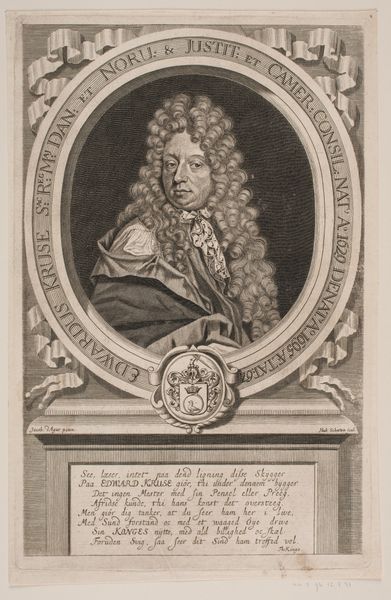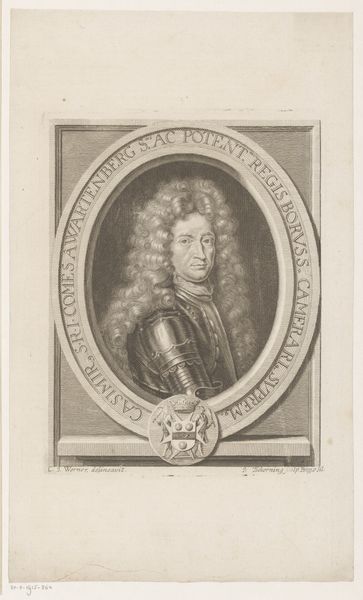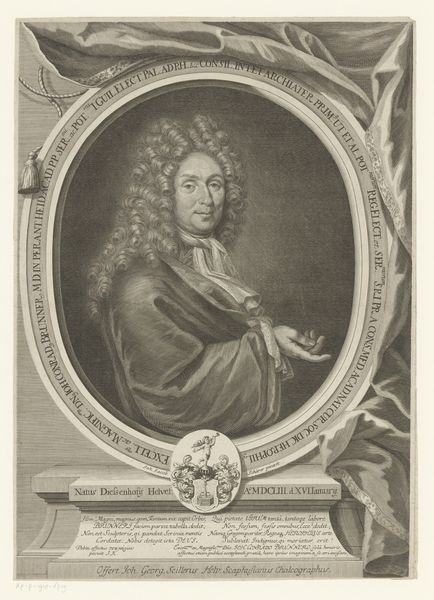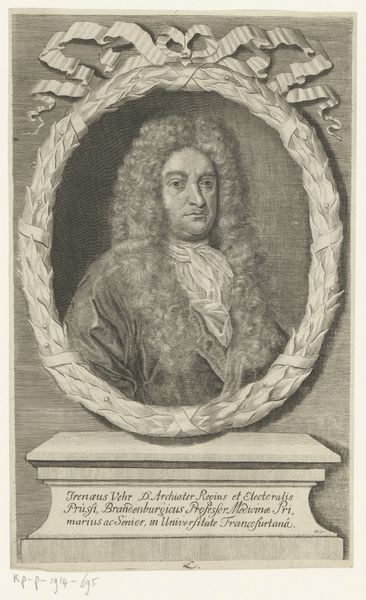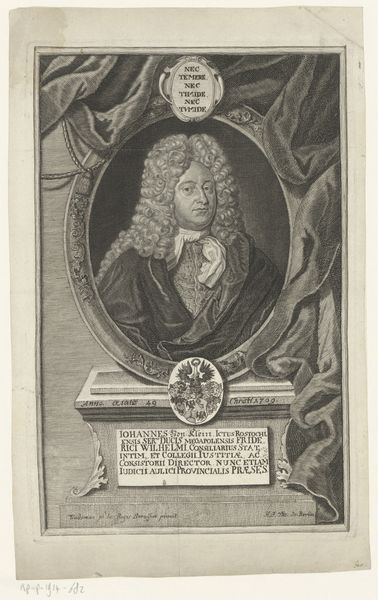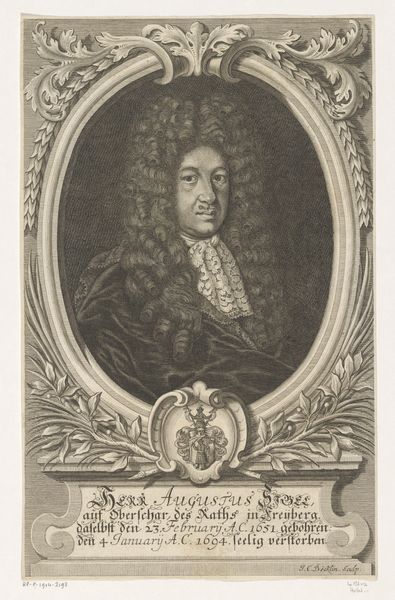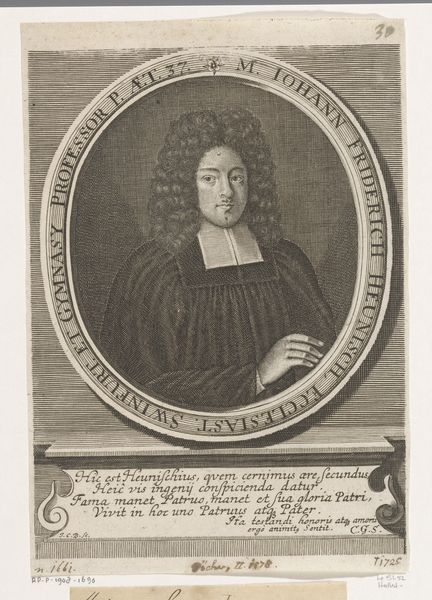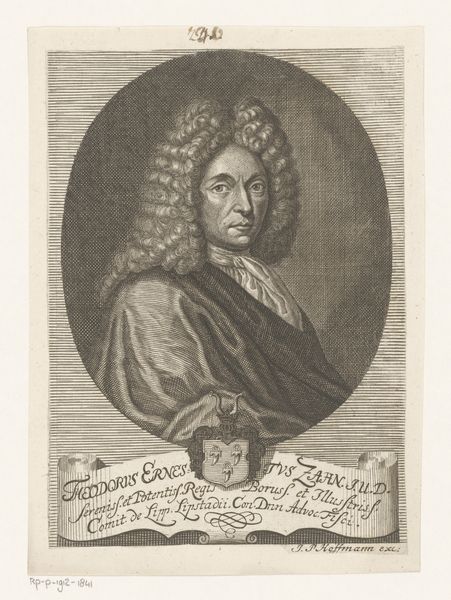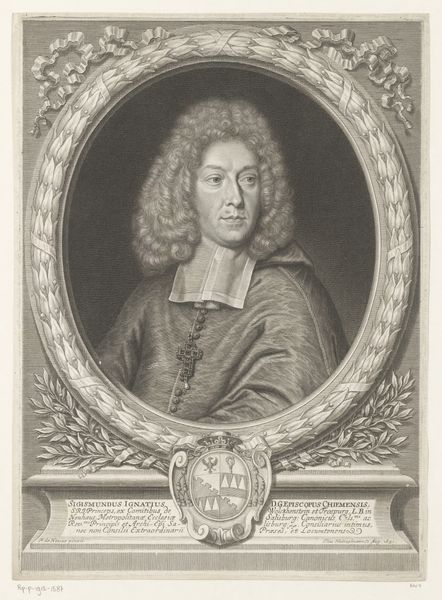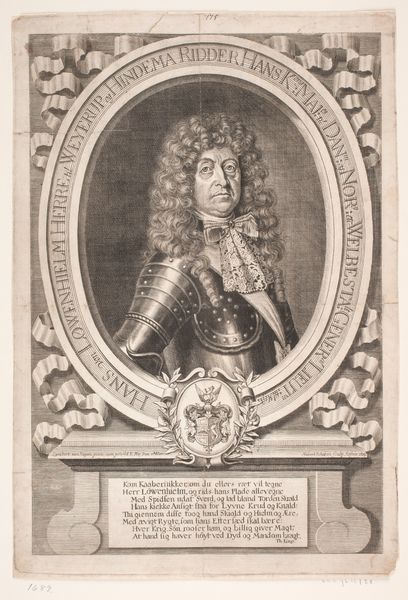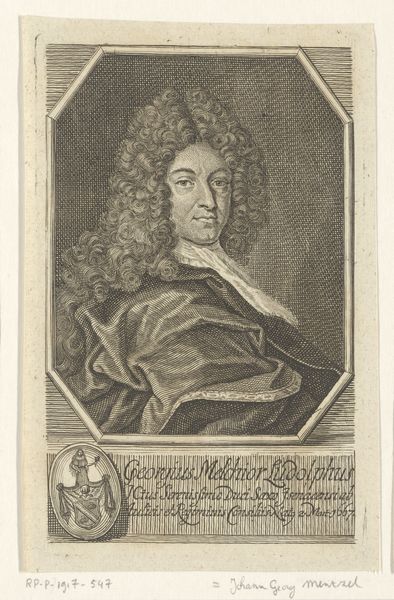
print, engraving
#
portrait
#
pencil drawn
#
baroque
# print
#
charcoal art
#
portrait reference
#
pencil drawing
#
portrait drawing
#
engraving
#
pencil art
Dimensions: height 314 mm, width 208 mm
Copyright: Rijks Museum: Open Domain
Editor: So, this is "Portret van Hermann Friedrich Teichmeyer," an engraving from somewhere between 1698 and 1721, attributed to Johann Kenckel. It's quite striking, this ornate oval portrait set against a rectangular base with inscription. It gives the subject a great amount of importance, even reverence. What strikes you when you look at this work? Curator: The setting is key. This isn't just a likeness, it's a public monument. Think about the role of portraiture in solidifying social hierarchies and intellectual authority back then. The Latin inscription, the academic titles surrounding Teichmeyer's image - "Philosophiae et Medicinae Doctor" – reinforce his elevated position in society. How do you think that influenced the artist's choices? Editor: I guess it suggests Kenckel aimed for more than just capturing Teichmeyer's face. The whole composition seems designed to project power and erudition. Does the fact that it's a print influence its function? Curator: Absolutely! Prints made portraits more accessible and distributed the sitter’s image wider, spreading his influence. The text below further immortalizes him through praise, connecting him to nature, mathematics, medicine, and even 'divine Chymia.' It elevates him to an almost mythical status. Notice anything about his wig and drapery? Editor: It's very elaborate and detailed, like a cascade of curls, and the drapery, while simple, seems to almost spill into the inscription panel, sort of merging him with his achievements. So, is this piece more about Teichmeyer's accomplishments than his appearance? Curator: Precisely. It speaks volumes about the social function of art and the public image of intellectuals at that time, reminding us how portraits served to promote and solidify social positions within academic circles and beyond. It's all part of constructing an idea of intellectual excellence and projecting that publicly. Editor: I hadn’t considered the layers of social meaning embedded in what seemed like a simple portrait! It highlights the connection between status and the arts in promoting social identities. Curator: Exactly, seeing art as participating in cultural and political processes definitely enhances our understanding and appreciation of it!
Comments
No comments
Be the first to comment and join the conversation on the ultimate creative platform.
